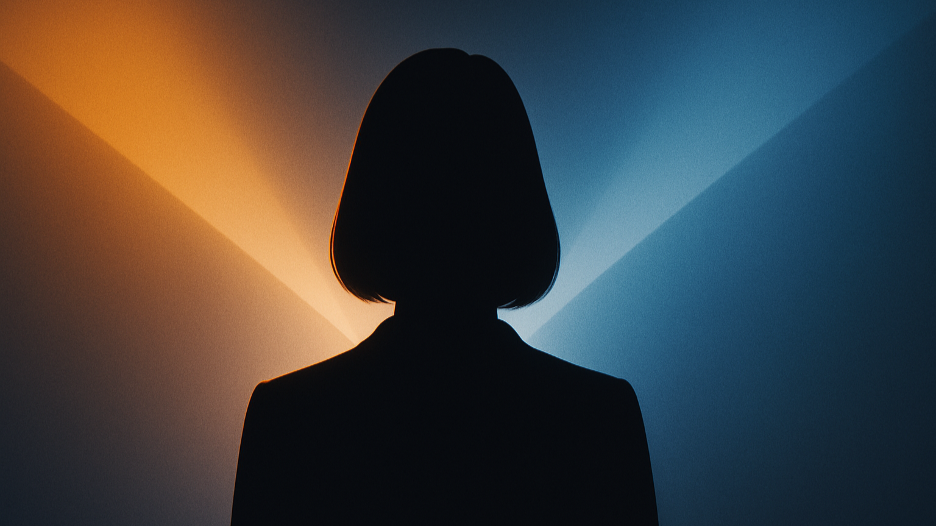Article
Getting The Right People On The Bus
September 6, 2020

Factors That Distinguish Effective Team Members
Building the senior team is critical to the organization’s success and an important part of the leader’s job. But often, the criteria for selecting team members and the process for recruiting, interviewing, selecting, and onboarding are flawed or haphazard. Hiring decisions that are made with too great a sense of urgency can lead to disaster.
Today, the competition for top talent is intense. Chances are that you will have to balance the need to put someone in place with your desire to hire the best. Until the organization has a reputation/brand, and financial resources, it may be difficult to attract top talent. The competitive hiring market also doesn’t allow you to have “A” players in every position, although that may be desirable. However, there are certain things to look for that will give you a better chance at hiring successful team members.
Having too narrow a model of the kind of person you prefer, whether that be academic pedigree, experience at a well-known successful company, or a particular type of intellectual or interpersonal style, can be a trap. Some companies lean toward hiring people who are highly intelligent, while others have a preference for people with good interpersonal skills. One of my corporate clients over-indexed for hiring people who made a good first impression and had good interpersonal skills. They ended up hiring talent whose need to be liked was greater than their ability to execute and get results, and who also wanted to avoid conflict! Personally, I had to learn that people I resonated with on the level of ideas were not always the right fit for a job that demanded attention to details and execution.
So, what should you look for when choosing talent and/or constructing your own executive team? Through extensive research (explained in their book, When Teams Work Best)
Frank LaFasto and Carl Larson identified six factors that distinguish effective from ineffective team members. They are:
1. Experience
: Practical knowledge of the area or function, grasp of technical capabilities and needs, breadth and depth of experience and a record of success that is relevant to the organization’s major objectives.
2. Problem solving ability
: One of the functions of a team is to solve problems, so an effective team member must have the ability to identify and clarify issues, understanding the relevant facts and their implications. He or she must be able to stay focused, make decisions, and proactively solve problems.
3. Openness:
To get the most out of your team as a problem-solving group, you need people who are willing and able to say what’s on their minds and openly express their point of view, including having the courage to disagree with the leader and bring up issues that need to be resolved.As the leader, you need the courage to listen to, and honestly consider, ideas and strategies that differ from your own. This will create an environment conducive to an open exchange of ideas.
4. Personal Style:
The most effective team members inspire others with their positive energy and attitude. They have an infectious enthusiasm about the work and a likeable, friendly, cooperative style which makes everyone feel motivated and comfortable. People who are negative, combative, critical, and pessimistic do not help team morale. Some people who have strong technical and analytical skills can be intellectually aggressive, highly skeptical and critical of others without having awareness of the negative impact of these tendencies on their relationships.
5. Supportiveness:
A team needs people who have the motivation, and the capacity, to put the good of the team above their own individual ambitions. On an effective, high-achieving team, people are supportive of each other. They share a desire and willingness to help each other succeed, and express this through mutual encouragement, a willingness to pitch in and help other team members overcome obstacles, and by putting the team’s goals above any individual agenda. Put simply, they know how to be there for each other. They are sensitive, considerate, and easy to work with.
Some people have a hard time being supportive team players. They are self-centered, focused on their own needs, agenda, and career. Some are socially competitive and need to win and be right. Some are simply determined to get their way and will use intimidation to get it. Many people are so personally ambitious and focused on their own narcissistic agenda that they are unable to be helpful and supportive of others.
6. Action orientation:
It’s important that team members have a bias for action. People who talk about things but don’t do anything much are not the ones you need on your team. You want members on your team who are willing to take initiative, and who get things done, individuals who have a desire to set and achieve goals. By their example and speech, they encourage others to take action. In the interest of getting results, they are quite willing to experiment and try a different approach. This is important on all teams, but perhaps especially in a small company where the fuse is burning, you’ve got too much to do, and the money always seems to be running out.
Good To Great: Getting The Right People On The Bus
Leaders are ultimately responsible for getting the right people on the bus. An important perspective on team building comes from Jim Collins, author of Good to Great, Built to Last and other influential books. In an example that has since become famous, he compares a company to a bus, and the leader to the bus driver.
You are a bus driver. The bus, your company, is at a standstill, and it’s your job to get it going. You have to decide where you're going, how you're going to get there, and who's going with you. Most people assume that great bus drivers (read: business leaders) immediately start the journey by announcing to the people on the bus where they're going—by setting a new direction or by articulating a fresh corporate vision. On the contrary, Collins' research showed that leaders of companies that go from good to great start not with “where” but with “who.” They start by getting the right people on the bus, the wrong people off the bus, and the right people in the right seats.
One of the most important factors in creating a highly successful team is to have the right people. “Put ‘who’ ahead of strategy, ‘who’ ahead of tactics, ‘who’ ahead of technology, ‘who’ ahead of business ideas – ‘who’ ahead of everything!”
And as discussed above in the context of the LaFasto and Larson research, the people you want to gather around you, to put on your bus, are those who are both capable and inclined to put the good of the organization ahead of their personal goals, people who are not self-centered individualists who put their own career ahead of the good of the organization.
According to Collins’ research, “Level 5 leaders,” his highest rank of best leaders, “channel their ego needs away from themselves and into the larger goal of building a great company. It’s not that Level 5 leaders have no ego or self-interest. Indeed, they are incredibly ambitious–but their ambition is first and foremost for the institution, not themselves.” In other words, “We found that for leaders to make something great, their ambition has to be for the greatness of the work and the company, rather than for themselves.” .
share this
Related Articles
Related Articles

The Leadership Tightrope If you lead long enough, you start to realize something uncomfortable: everything that makes you effective also threatens to undo you. Your drive becomes impatience. Your confidence becomes stubbornness. Your empathy turns into guilt. The longer you lead, the more you realize that the job isn’t about choosing one trait over another — it’s about learning to carry both. That’s what maturity looks like in leadership. It’s not balance. It’s tension well managed. The False Comfort of Either/Or Most leaders crave clarity. We want rules. Playbooks. Certainty. Should I be tough or kind? Decisive or collaborative? Visionary or practical? The insecure part of the brain hates contradiction. It wants the “right answer.” But leadership lives in the messy middle — the place where both truths exist, and neither feels comfortable. The best leaders aren’t either/or thinkers. They’re both/and navigators. A Story from the Field I once coached a CEO who told me, “I’m torn between holding people accountable and being empathetic.” I said, “Why do you think those are opposites?” He paused, then laughed. “Because it’s easier that way.” Exactly. It’s easier to pick a lane than to learn how to drive in two at once. He eventually realized the real question wasn’t which side to choose, but when and how to lean into each. He became known as “the fairest tough boss in the building.” That’s the magic of integration — toughness with tenderness, vision with realism, clarity with compassion. Why Paradox Feels So Hard Contradictions feel like hypocrisy when you haven’t made peace with your own complexity. If you believe you have to be one consistent version of yourself — confident, decisive, inspiring — then every moment of doubt feels like fraud. But the truth is, great leaders are contradictory because humans are contradictory. You can be grounded and ambitious, humble and proud, certain and still learning. The work is not to eliminate the tension — it’s to get comfortable feeling it. The Psychology Behind It Our brains love binaries because they make the world simple. But complexity — holding opposites — is the mark of advanced thinking. Psychologists call this integrative complexity — the ability to see multiple perspectives and blend them into a coherent approach. It’s not compromise; it’s synthesis. It’s saying, “Both are true, and I can move between them without losing my integrity.” That’s where wisdom lives — in the movement, not the answer. Funny But True A client once told me, “I feel like half monk, half gladiator.” I said, “Congratulations. That means you’re leading.” Because that’s what the job demands: peace and fight, compassion and steel. If you can’t hold both, you end up overusing one until it breaks you. The Cost of One-Dimensional Leadership We’ve all worked for the “results-only” leader — brilliant, efficient, and emotionally tone-deaf. And the “people-first” leader — kind, loyal, and allergic to accountability. Both are exhausting. Both create lopsided cultures. When leaders pick a single identity — visionary, disciplinarian, nurturer, driver — they lose range. They become caricatures of their strengths. True greatness comes from emotional range, not purity. The Paradox Mindset Here’s how integrative leaders think differently: They value principles over preferences. They can be decisive without being defensive. They know empathy isn’t weakness and toughness isn’t cruelty. They trade perfection for adaptability. They’re the ones who can zoom in and out — from the numbers to the people, from the details to the meaning — without losing coherence. They’re not consistent in behavior. They’re consistent in values. That’s the difference. How to Practice Both/And Thinking Spot your overused strength. The strength that’s hurting you most is the one you lean on too much. If you’re decisive, try listening longer. If you’re compassionate, try being direct faster. Ask, “What’s the opposite quality trying to teach me?” Impatience teaches urgency; patience teaches perspective. You need both. Invite your opposite. Bring someone onto your team who balances your extremes — not a mirror, a counterweight. Hold paradox out loud. Tell your team, “This decision has tension in it — and that’s okay.” Modeling that normalizes complexity for everyone else. A Moment of Self-Honesty I’ve spent decades watching leaders chase “clarity” like it’s peace. But peace doesn’t come from eliminating tension. It comes from trusting yourself inside it. Once you accept that leadership will always feel contradictory, you stop fighting it — and start flowing with it. You don’t need to be the calmest, toughest, or most visionary person in the room. You just need to be the one who can stay whole while the world pulls you in opposite directions. Your Challenge This Week When you catch yourself thinking, “Should I be X or Y?” — stop. Ask instead, “How can I be both?” Then practice it in one small moment. Be kind and firm. Bold and humble. Fast and thoughtful. That’s where growth hides — in the discomfort between two truths. Final Word The best leaders aren’t balanced. They’re integrated. They’ve stopped trying to erase their contradictions and started using them as fuel. They’ve learned that leadership isn’t about certainty. It’s about capacity — the capacity to hold complexity without losing your center. That’s not chaos. That’s mastery.




